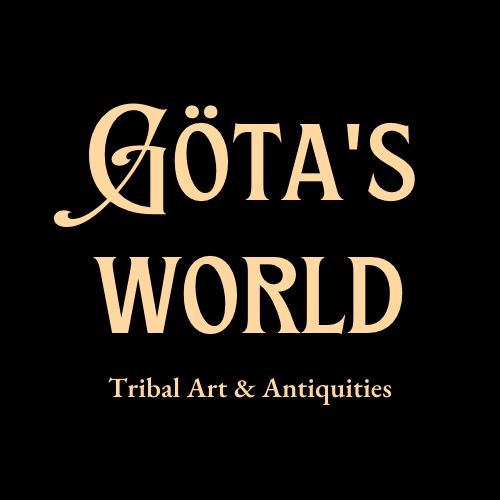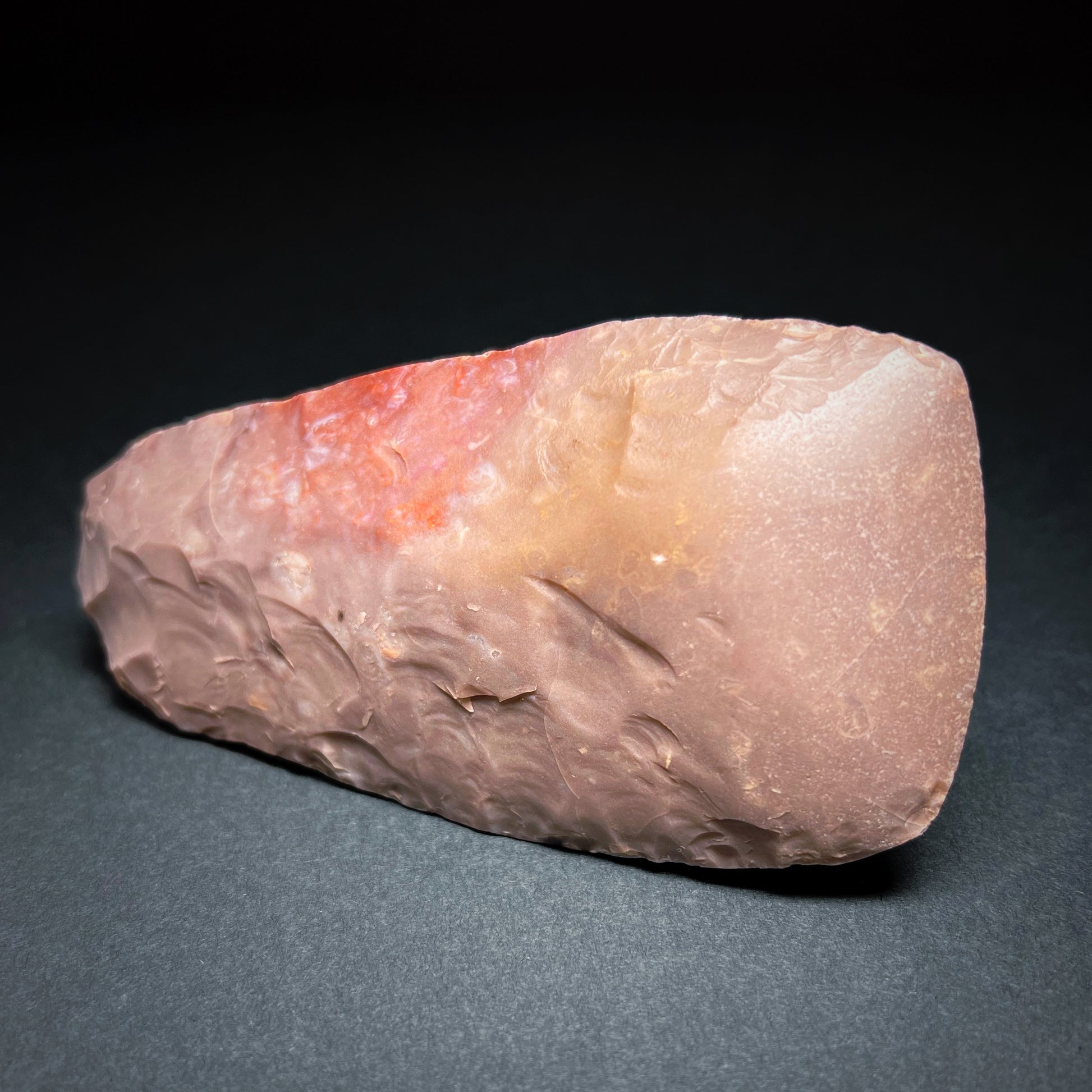Neolithic Capsian Culture Stone Axe
Neolithic Capsian Culture Stone Axe
Couldn't load pickup availability
Capsian Culture, c. 6000–3000 BC, Mali / Southern Sahara
Magnificent African Neolithic Capsian flint celt axe, expertly knapped and displaying striking natural colours of deep red and creamy white throughout the stone. The blade and faces show areas of fine early polishing, a significant technological advancement of Neolithic toolmaking. Polishing allowed for a smoother, sharper cutting edge, making the tool far more effective for woodworking, clearing vegetation, and early agriculture.
This type of axe would originally have been hafted into a wooden handle and lashed securely into place. Like their European Neolithic counterparts, African Neolithic celts were produced either by complete knapping or by grinding a rough blank that was then finished through controlled flaking. The craftsmanship of this example clearly reflects the skill and evolving technological sophistication of early Saharan communities.
The Capsian culture—a major Mesolithic to Neolithic tradition—flourished across the eastern Maghreb, particularly in what is now eastern Algeria and west-central Tunisia. It dates roughly from 8000 to 2700 BC. First identified in 1909 at the site of El-Mekta near ancient Capsa (modern Gafsa), the culture developed during a period when the Sahara was far more hospitable, characterized by open savanna landscapes resembling modern East Africa, with Mediterranean forests occupying higher altitudes.
The Capsian people lived primarily from hunting, gathering, and extensive snail-collecting, an activity so central to their subsistence that vast mounds of shells—escargotières—remain one of their archaeological signatures. Their faunal remains include a broad range of animals such as aurochs, hartebeest, gazelles, and hares. Although little is known about the plants they consumed, their burial practices indicate a belief in an afterlife.
Decorative expression was important to the Capsian world: figurative and abstract rock art, tools and bodies coloured with ochre, and personal ornaments such as ostrich eggshell beads, shell necklaces, and engraved objects are all well attested. These artistic traditions, coupled with their finely worked stone tools, provide an important window into a dynamic prehistoric culture that thrived in a greener Sahara.
A superb and collectible example of Neolithic North African craftsmanship—visually striking, historically rich, and exceptionally well-made.
Good condition. Wear consistent with age and use. Intact without repairs. Minor nicks and chips to peripheries. Nice mineral deposits and iron hued patina in flaked areas. Size approx. 13,8cm x 6,8cm x 2,8cm.
Provenance: Dutch private collection.
References and further reading:
Late Pleistocene-Early Holocene Maghreb. In Peregrine, Peter Neal; Ember, Melvin (eds.). Encyclopedia of Prehistory, Vol. 1 : Africa. New York: Kluwer Academic/ Plenum Publishers, 2001, pp. 129–149. (https://watarts.uwaterloo.ca/~dlubell/Ency_Maghreb.pdf)
Technological and Cultural Change Among the Last Hunter-Gatherers of the Maghreb: The Capsian (10,000–6000 B.P.), Noura Rahmani, Journal of World Prehistory 18, no. 1 (2004): 57–105. (http://www.jstor.org/stable/25801215)
Paleoenvironments and Epi Paleolithic economies in the Maghreb (ca. 20,000 to 5000 B.C.), David Lubell, In, J.D. Clark & S.A. Brandt (eds.), From Hunters to Farmers: The Causes and Consequences of Food Production in Africa, Berkeley: University of California Press, 1984 pp. 41–56.(https://watarts.uwaterloo.ca/~dlubell/Lubell_1984.pdf)
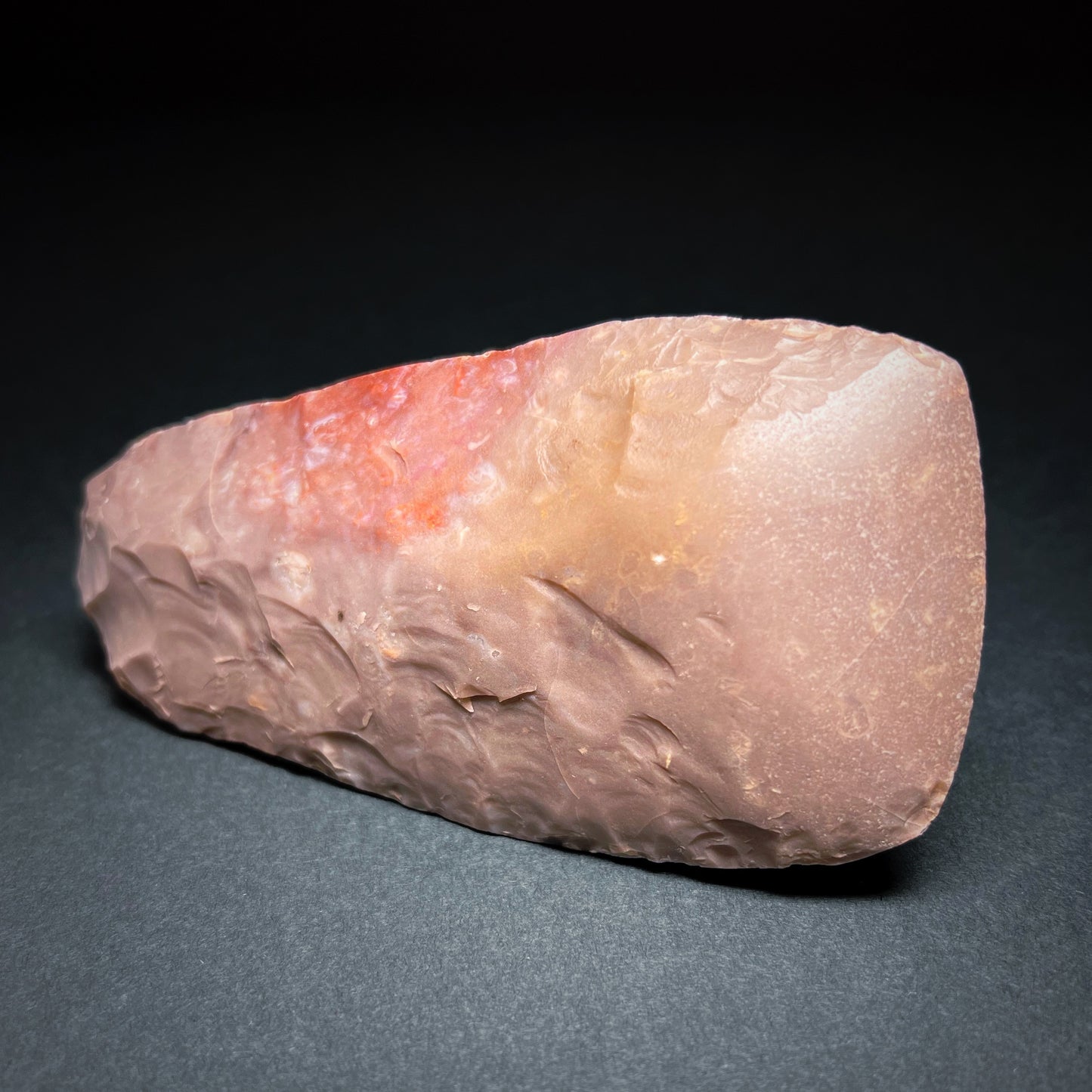
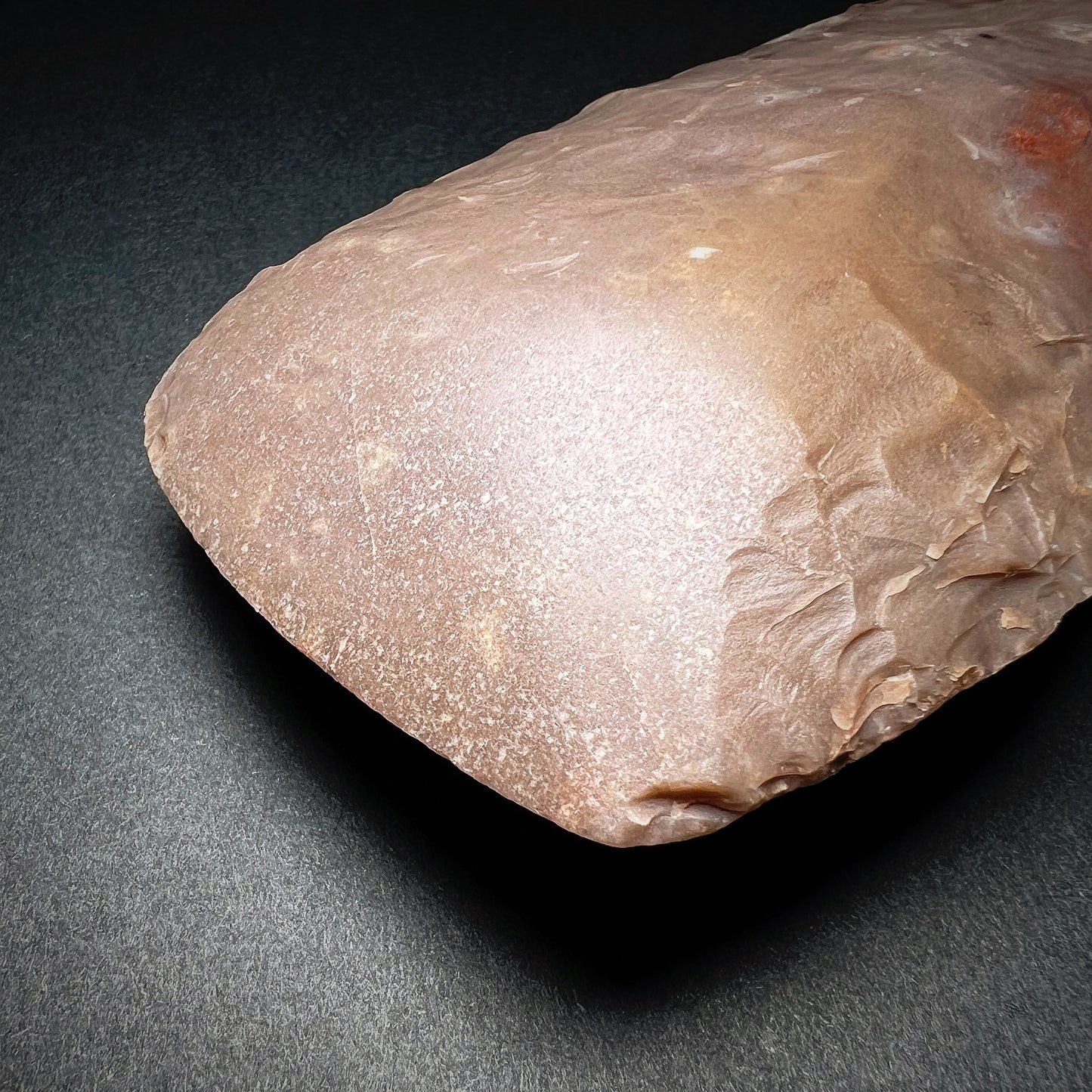
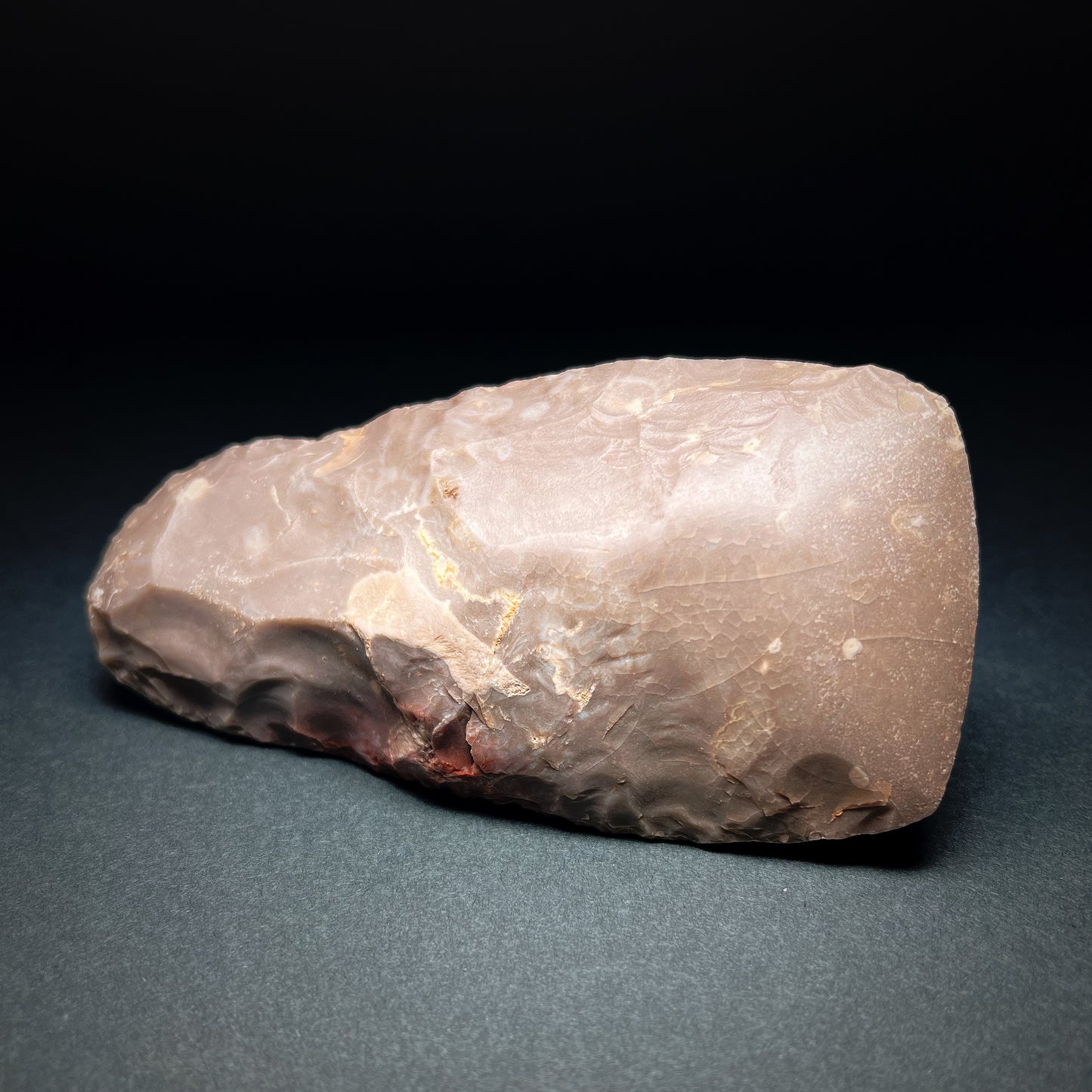
-
Shipping
The shipment will be prepared in the course of 3-5 days and dispatched via Posti Group Oyj or purchased item(s) can be picked up from our shop during the store's opening hours (Tarkk’ampujankatu 4, 00140, Helsinki, Finland). Within the Finland, all items are shipped via Posti Group Oyj unless otherwise requested. We pack the items carefully and mainly in recycled materials because we want to save nature. You will receive the tracking number for your items by e-mail.
-
Returns
Returns and exchange will be accepted within fourteen days (14) of receipt at the purchaser’s cost to include freight and packaging. Items must be returned in the same condition as when they were shipped, and will not be accepted if damaged or altered in any way. Please inform us via email (info@gotanmaailma.fi) or by calling +358408408352 before sending. We do not accept returns more than 14 days after delivery.
